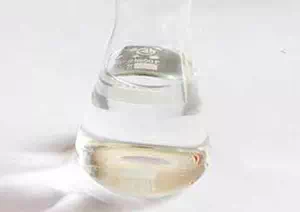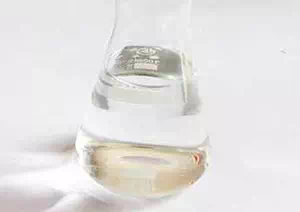All Categories


Trimethylbenzene CAS 95-63-6, Trimethylbenzene, CAS 95-63-6
1,2, 4-trimethylbenzene, as a key aromatic hydrocarbon raw material, is irreplaceable in the fields of plasticizers, electronic solvents, and pharmaceutical synthesis. However, its flammability (flash point < 49℃) and health risks need to be strictly controlled.
CAS : 95-63-6
Formula : C9H12
Mol. wt. : 120.19
EINECS : 202-436-9
| CAS | 95-63-6 |
| Molecular formula | C9H12 |
| Molecular weight | 120.19 |
| EIENCS | 202-436-9 |
| Form | Liquid |
| Melting point | -44 °C |
| boling point | 168 °C(lit.) |
| Density | 0.876 g/mL at 20 °C(lit.) |
| Solubility | 0.057g/l |
| PKA | >14 (Schwarzenbach et al., 1993) |
| Color | Clear colorless |
| Storage temp |
1,2, 4-trimethylbenzene, as a key aromatic hydrocarbon raw material, is irreplaceable in the fields of plasticizers, electronic solvents, and pharmaceutical synthesis. However, its flammability (flash point < 49℃) and health risks need to be strictly controlled. The future market will be driven by industrialization in the Asia-Pacific region and green technologies (such as the synthesis of biodegradable plastics). Investment should focus on efficient catalytic processes and the construction of regional supply chains.
Chemical raw materials
Produce plasticizers (such as trioctyl phthalic anhydride /TOTM) and epoxy resin curing agents;
Synthesize the precursor of vitamin E (trimethylhydroquinone).
Solvent: Used in coatings, inks, and electronic cleaning agents (dissolving photoresists and packaging materials).
Pharmaceuticals and pesticides: Synthetic drugs (such as benzbromarone), dyes and pesticide intermediates.
New materials: Production of water-soluble alkyd resins and unsaturated polyester resins.
Health hazard:
It irritates the eyes, skin and respiratory tract. High concentration inhalation inhibits the central nervous system and may cause headache and nausea.
Acute toxicity: Rats inhaled LC₅₀=18,000 mg/m³ (4 hours), and intraperitoneally injected LD₅₀=2,000 mg/kg.
Environmental hazard: Toxic to aquatic organisms and poses a long-term and persistent hazard (WGK Level 2).
Protective measures: Wear a gas mask, chemical goggles, anti-permeation work clothes and rubber gloves during operation.
Leakage treatment: Adsorb with sand or build embankments to contain the leakage to prevent it from entering water bodies.
* Prompt reply and 24 hours online, professional team to provide best price and high quality product.
* Sample testing support.
* Every batch of products will be tested to ensureits quality.
*The packing also can be according the customers` requirment.
*Any inquiries will be replied within 24 hours.
*we provide Commerical Invoice, Packing List, Bill of loading, COA , Health certificate and Origin certificate. If your markets have any special requirements, let us know.